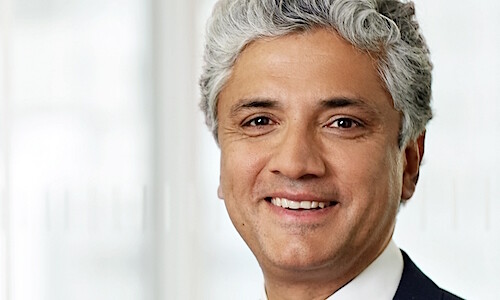Advanced Gene Editor: Precise Complete Gene Insertion

Table of Contents
The Challenges of Precise Complete Gene Insertion
Precisely inserting a complete gene into a specific genomic location without causing unintended mutations or off-target effects presents significant hurdles. The complexity of genomic integration mechanisms, the need to maintain gene functionality post-insertion, and the risk of insertional mutagenesis all contribute to the difficulty. Furthermore, delivering large gene constructs efficiently and safely remains a major challenge.
- Complexity of genomic integration mechanisms: The intricate cellular machinery involved in DNA integration can lead to unpredictable insertion sites and potential disruption of nearby genes.
- Maintaining gene functionality after insertion: The inserted gene needs to be correctly processed and expressed to achieve the desired therapeutic or biotechnological outcome. Incorrect integration can lead to dysfunctional gene products.
- Minimizing the risk of insertional mutagenesis: Insertional mutagenesis, where the insertion process disrupts the function of a critical gene, is a serious concern and can lead to harmful consequences.
- Challenges in delivering large gene constructs: Efficient delivery of large gene constructs, which are often required for complete gene insertion, is difficult using standard viral or non-viral methods.
Advanced Technologies Enabling Precise Complete Gene Insertion
Several cutting-edge gene editing technologies are improving the precision of complete gene insertion. These advancements are steadily overcoming the limitations of previous methods.
- CRISPR-Cas systems: CRISPR-Cas systems, particularly advanced versions like prime editing and base editing, offer enhanced precision in gene insertion. Prime editing, for example, allows for targeted insertions and deletions without requiring a double-stranded DNA break, minimizing off-target effects. Base editing allows for precise changes to individual bases, potentially facilitating gene correction without complete gene insertion in some cases.
- Homologous recombination: This natural cellular process allows for precise gene integration using a homologous DNA template. However, its efficiency is relatively low, and it often requires complex and time-consuming procedures. Improved methods are constantly being developed to boost its efficiency.
- Non-viral gene delivery systems: Advancements in non-viral gene delivery, such as the use of lipid nanoparticles, are providing safer and more efficient alternatives to viral vectors for delivering large gene constructs. These systems offer reduced immunogenicity and improved tissue targeting.
- Targeted nucleases (e.g., TALENs, ZFNs): While less frequently employed for complete gene insertion compared to CRISPR-Cas systems, transcription activator-like effector nucleases (TALENs) and zinc-finger nucleases (ZFNs) still play a role in targeted genome editing. Their use, however, requires considerable design and optimization for each specific target.
Applications of Precise Complete Gene Insertion
The potential applications of precise complete gene insertion are broad and extend across various fields.
- Gene therapy: Complete gene insertion holds immense promise for treating a wide range of genetic disorders, including cystic fibrosis, hemophilia, and inherited metabolic diseases, where a faulty gene needs to be replaced with a functional copy.
- Biotechnology: Precise gene insertion enables the engineering of cells for the production of therapeutic proteins, industrial enzymes, and other valuable biomolecules. This opens doors for advancements in biomanufacturing and biopharmaceuticals.
- Agricultural applications: Inserting genes that confer disease resistance, improve crop yields, or enhance nutritional value can revolutionize agriculture and contribute to food security.
- Basic research: Precise gene insertion is a crucial tool for studying gene function and regulation, providing valuable insights into complex biological processes.
Case Studies and Examples of Successful Complete Gene Insertions
Several studies have demonstrated successful applications of precise complete gene insertion. For example, research using CRISPR-Cas systems has shown successful correction of genetic defects in animal models of various diseases. Further research has highlighted the successful insertion of genes for the production of therapeutic proteins in mammalian cell lines, paving the way for efficient biopharmaceutical production. Specific publications detailing these advancements should be cited here.
Future Directions and Challenges in Precise Complete Gene Insertion
Despite significant progress, challenges remain in fully realizing the potential of precise complete gene insertion.
- Improving the efficiency and precision of gene insertion: Further optimization of gene editing technologies is crucial to enhance the efficiency and reduce off-target effects.
- Reducing off-target effects: Minimizing unintended edits remains a key focus of research to enhance the safety and efficacy of complete gene insertion.
- Developing safer and more effective gene delivery systems: Improving the delivery of large gene constructs is crucial for wider therapeutic applications.
- Addressing ethical considerations and regulatory challenges: Rigorous ethical considerations and regulatory frameworks are essential to ensure responsible and safe use of this technology.
The Future of Advanced Gene Editor: Precise Complete Gene Insertion
Advanced gene editor technologies for precise complete gene insertion represent a transformative development with far-reaching implications across medicine, biotechnology, and agriculture. Overcoming the remaining challenges – such as improving efficiency and minimizing off-target effects – will be crucial to fully realizing the therapeutic and technological benefits. Further research, investment, and international collaboration are needed to accelerate advancements in this field and bring the promise of advanced gene editors for precise complete gene insertion to fruition. Explore related resources and stay updated on the latest developments to contribute to this rapidly evolving and impactful field.

Featured Posts
-
 Sparks Mad A Critical Analysis Of The New Album
May 30, 2025
Sparks Mad A Critical Analysis Of The New Album
May 30, 2025 -
 Broadcoms Proposed V Mware Price Hike At And T Reports A 1 050 Cost Surge
May 30, 2025
Broadcoms Proposed V Mware Price Hike At And T Reports A 1 050 Cost Surge
May 30, 2025 -
 Fridays Market Outlook Further Losses Expected For Live Music Stocks
May 30, 2025
Fridays Market Outlook Further Losses Expected For Live Music Stocks
May 30, 2025 -
 Deutsche Bank Head Of Distressed Sales Resigns Joins Morgan Stanley
May 30, 2025
Deutsche Bank Head Of Distressed Sales Resigns Joins Morgan Stanley
May 30, 2025 -
 Sinner And Djokovic Rising To The French Open Challenge
May 30, 2025
Sinner And Djokovic Rising To The French Open Challenge
May 30, 2025
